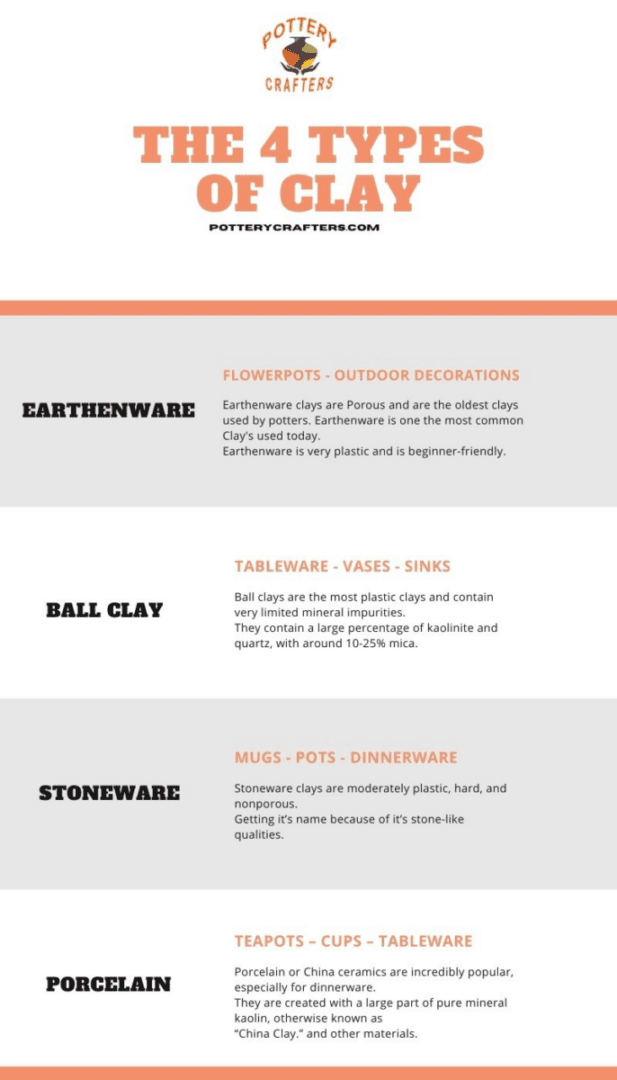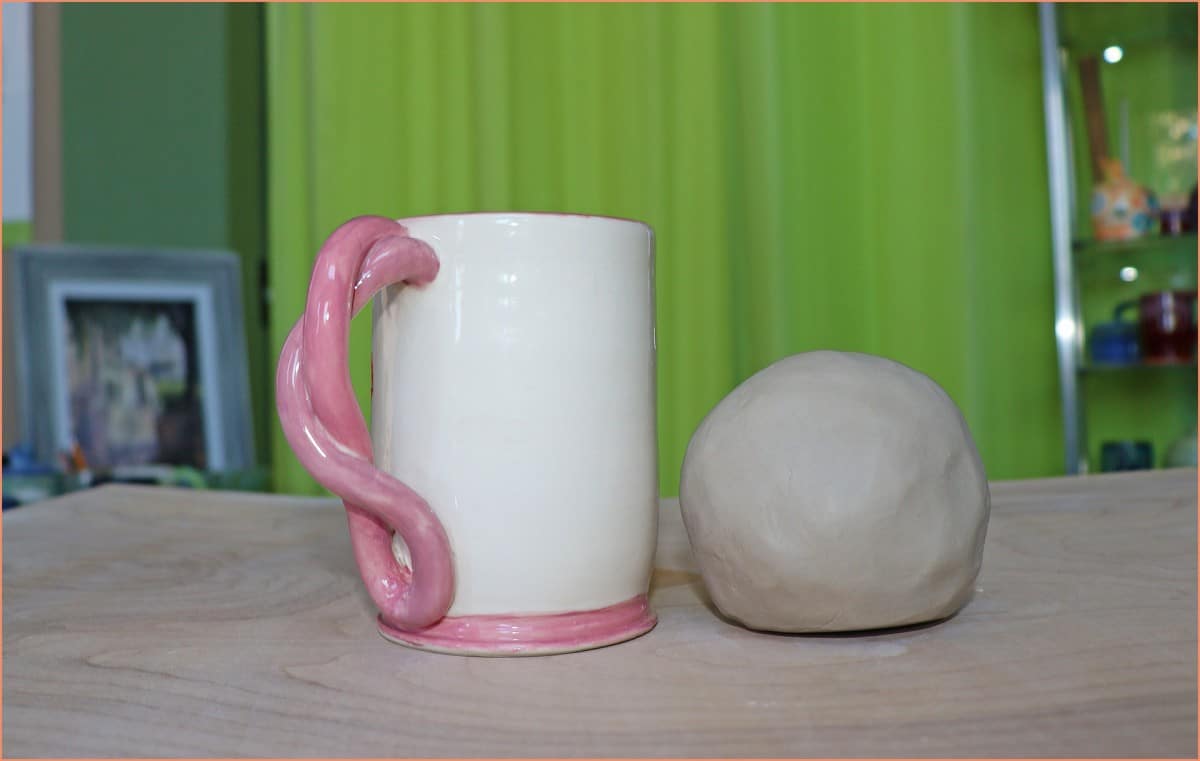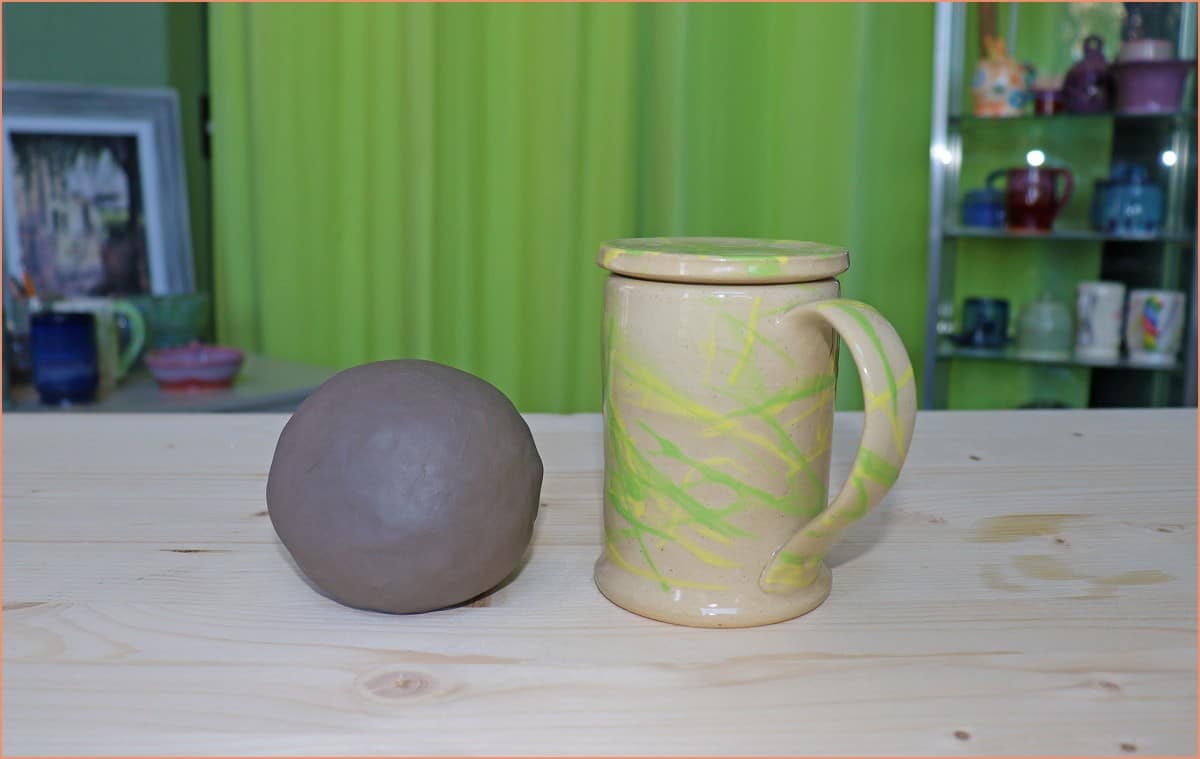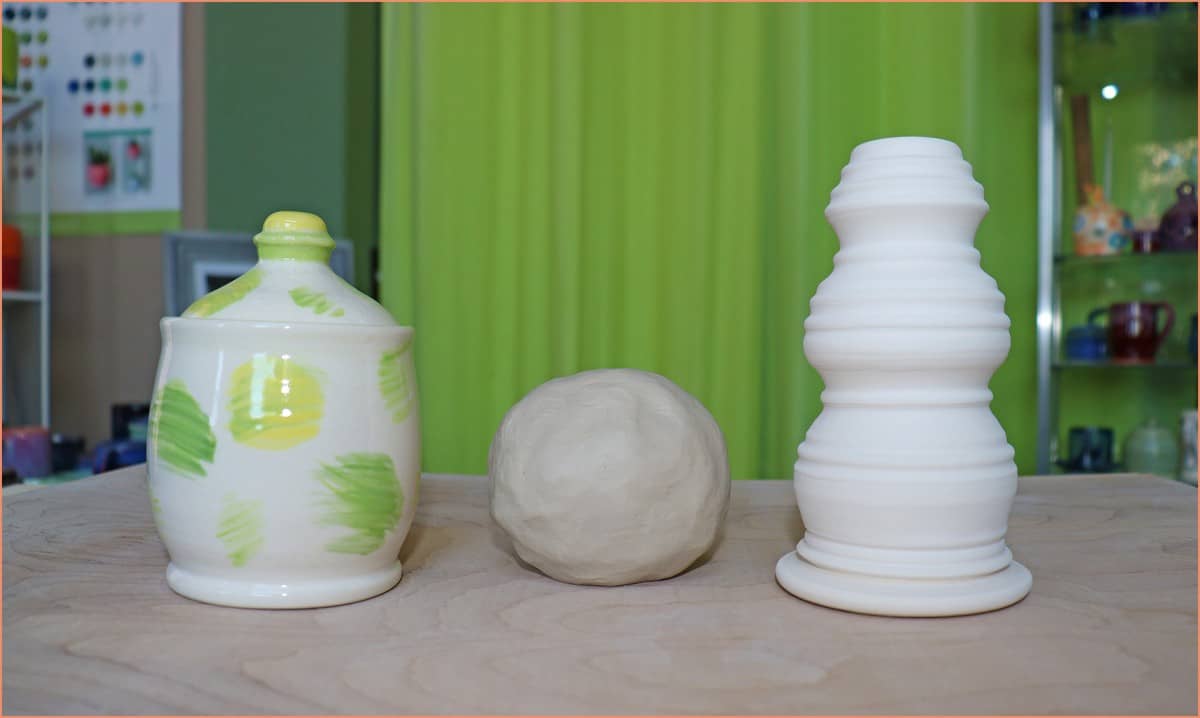Match the Termconcept to the Correct Description Relating to the Arts Slip Kaolin
In that location are various types of pottery clays available in the marketplace. If you're a beginner or aren't knowledgeable most them, y'all tin can end up buying the incorrect product and wasting your precious time and money. Knowing about these clay types can assistance you lot choose the right clay for your next project.
So, what are the four types of clay? The 4 types of clay are Earthenware clay, Stoneware dirt, Ball clay, and Porcelain. All of them can be used to make pottery, merely the terminate result would differ a lot thanks to their different textures, colors, and flexibilities.
In this article, we will talk over these clay types, their composition, color, uses, firing temperature, and the results they yield. But first, let's familiarize ourselves with common terms related to clays and the naturally found clay minerals that course the four clay types.
Chapter Disclaimer: We are ambassadors or affiliates for many of the brands we reference on the website. Equally an Amazon Associate, I earn from qualifying purchases.
Terms Related to Clays
Here are some full general terms you lot should know to understand the difference betwixt the various types of clays meliorate.
Plasticity
In simplified words, plasticity is the clay'due south flexibility or its potential to mold into the desired shape. Hence why processes like pottery, in which you model dirt or other plastic mediums into ceramics or sculptures, are called plastic arts.
The plasticity of dirt depends upon the size of its particle and its ability to retain water. It tin as well rely on the historic period of dirt material. For a potter like you lot, picking the right clay is crucial. The about common types of clay are all more or less plastic, i.e., they don't crack on bending, pushing, or pulling. Plasticity wears off once the dirt is fired.
Ceramic
We're all familiar with the term ceramic, and we know what object in our dinnerware closet is ceramic and what isn't. But what's the basic definition?
Well, in a curt sentence, ceramic is any solid sculpted body made of clay that has lost its plasticity subsequently being fired. Ceramics are corrosion-resistant, hard, and brittle objects. Once the clay is fired, it melts a fiddling, releases some gases, loses the retained water, and forms very sturdy bonds amongst the particles. This is called ceramic.
Dirt Compounds
Kaolinite
Kaolinite is a soft, earthy clay mineral with white color. This chemical compound is plant in all clay types. The compound is flexible but inelastic. It's found with a rust hue in some areas of the world. Kaolinite is a silicate compound.
Smectite
Smectite refers to clay minerals that contain varying amounts of alkali metals and alkaline earth metals. Dirt minerals blot h2o and are able to expand.
Chlorite
Chlorite is a mineral compound containing iron, magnesium, manganese, zinc, lithium, calcium, and nickel. The chemicals vary per mineral. Chlorite itself is no longer considered a clay compound, but it tin exist found in some clays as a mineral.
Illite
Illite is a not-expanding clay material. Information technology contains silicon, aluminum, iron, magnesium, and potassium. It can also comprise sodium and chromium. It's establish equally minor particles, unlike other clay minerals. It's a rocky compound.
The Four Types of Dirt
When it comes to using dirt one clay does not fit all. There are many dissimilar clays for different skill levels and unlike uses. These are the iv most common types of clays.

Earthenware Clay

Earthenware clays are the oldest clays used by potters and happen to be the most common today. It is very plastic and is beginner-friendly.
Colour
The earthenware colors are generally warm. The moisture clay has a tone of Brown, crimson, orange, or grey. After firing, earthenware shows brown, orange, red, grey, or white colors. Colors in pottery testify after beingness fired. Terracotta is the near popular colour yous can yield. Earthenware can be easily decorated over with paints and glazes.
Uses
Earthenware is used for sculpting, hand-edifice, and wheel throwing. You tin create sculptures, flowerpots, and other outdoor decorations. If it freezes, water tin't get trapped inside and crack.
Firing Temperaturedue south
In comparison to other clay types, earthenware fires at the everyman temperatures with pottery achieving the desired hardness. Well-nighEarthenware is fired anywhere from 1828to 2088 °F (998to 1142 °C) Cone 06 to Cone 2 for bisque firing. And Glaze fired from 1728to 1945 °F (942to 1063 °C), Cone 08 to Cone 04. This is due to the compound containing impurities like minerals. Once fired, earthenware is non-vitreous i.e., absorbs 7% or more moisture (h2o). Fifty-fifty after being fired, earthenware is somewhat soft and can exist scratched with a sharp object.
Ball Clay

Brawl clays are the most plastic clays and contain very limited mineral impurities. They contain a large per centum of kaolinite and quartz, with around 10-25% mica. Ball clays occur naturally as sediments or deposits, containing very fine minerals. Materials like lignite tin can also exist establish in ball clays.
Color
Ball clays lose color on firing. At the greenware stage, ball clays have a grey colour. After firing, they obtain a light buff color. They produce a fine white colour when fired right, making them popular among potters.
Uses
Because of the loftier plastic and high bounden quality, Brawl clays are commonly used for floor tiles, toilet bowls, vases, kiln furniture, and tableware. Ball clay alone tends to be likewise fine and glace for utilize. It tin exist used for wheel throwing but is mainly used in slip casting.
Firing Temperatures
Ball clays harden after being fired around 2345℉ (1285℃) Cone x. They take one huge disadvantage, and it happens during firing. Brawl clays compress excessively during the firing process. So, unless you have the skill or large enough kiln, you lot can't use ball clay on its own. Ball dirt is the best cloth to use for pottery when mixed with other clays (like kaolin).
Stoneware Clay

Stoneware clays are moderately plastic, hard, and nonporous. Getting its name because of its stone-like qualities.
Color
They vary in color from white, greyness, and all the manner to chocolate-brown when moisture. Stoneware clays contain kaolinite with small quantities of mica and quartz. Illite and smectite are often found too. The blazon of firing and temperature affects the colour, too.
Uses
This type of dirt tin be easily worked with and painted with underglazes, glazes, overglazes, enamels, etc. Which makes Stoneware Clay a popular dirt to use for tableware. Used mainly in manus-building and wheel throwing.
Firing Temperatures
Stoneware clays have two firing temperatures: Mid fire ranges from 2106 to 2262 ℉ (1152 to 1239 ℃) Cone 3 to Cone 7. And High burn down ranges from 2280 to 2345 ℉ (1249 to 1285 ℃) Cone viii to Cone x.
Burn clays, a blazon of refractory clay that is mainly used every bit an additive. These are very resistant to estrus, thus increasing the temperature at which stoneware clays mature. They as well requite stoneware a picayune roughness equally they incorporate mineral impurities such every bit iron. Iron frequently leaves black spots on the pottery later existence fired.

Porcelain Dirt

Porcelain or Cathay ceramics are incredibly pop, especially for dinnerware. They are created with a large part of pure mineral kaolin, otherwise known every bit "People's republic of china Clay." and other materials
Porcelains do have a color range, only all the colors are very subtle and light. At the greenware stage, they'll show a very light grey-ish tone. After firing, they are fair to white. Porcelain glazes, and enamels, tin can be applied to give color only and don't need glazing to repel h2o.
Uses
Kaolin clays are the least plastic clays, hence quite hard to work with. They burn down at high temperatures. Porcelain is mixed with various minerals to lower its firing temperature and increase workability. Mainly used in wheel throwing and bandage slipping to create tableware, vases, and other decorative objects.
There are three types of porcelain ceramics: Hard-Paste, Soft-Paste, and Bone China.
- Difficult-paste or "truthful" porcelain is the nearly mutual type. It contains an added mineral to the kaolin, usually feldspar or mica. True" porcelain is fired at very loftier temperatures (2345℉ or 1285℃) Cone 10 and yields sturdier objects.
- Soft-paste porcelain is the least mutual blazon. Europeans invented information technology and fired at lower temperatures (virtually 2167℉ or 1186℃) Cone 5. The soft paste porcelain is considered a weak porcelain. Information technology doesn't need a stock-still mineral to be created. Kaolin is mixed with bone ash, quartz, glass, and soapstone to yield this type, with ball clay oftentimes added into the mix.
- Bone cathay has mostly replaced true porcelain in modernistic times. Information technology's the strongest kind of porcelain. Information technology's very resistant to chip impairment and has peachy physical strength. It commonly produces a white or translucent result. It contains kaolin, bone ash, feldspar, and phosphates.
Detect Your Clay Here
Conclusion
In this article, we discussed the 4 major types of clays: Earthenware, Stoneware, Ball clay, and Porcelain. All of these clays take dissimilar firing temperatures, colors, textures, and uses. Even if the clays are essentially composed of similar minerals impurities.
Picking the right clay is perhaps the first step to making pottery. Information technology should depend on your needs. Beginners should ever start with Earthenware or Stoneware. Advanced potters tin can utilize all clay types, fifty-fifty mix them to adjust the plasticity. If you have the correct skills, you can utilise any clay to brand your masterpiece.
Source: https://potterycrafters.com/what-are-the-four-types-of-clay/
0 Response to "Match the Termconcept to the Correct Description Relating to the Arts Slip Kaolin"
Post a Comment